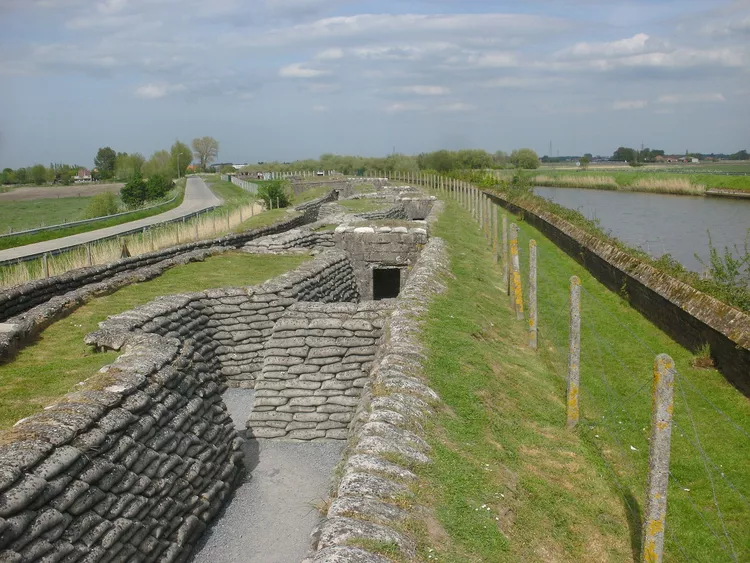The Trench of Death: Discovering History in Diksmuide, Belgium
Opposing elements of misery and glory marked the Belgian section of the Western front called The Trench of Death between 1914 and 1918. Here, regiment after regiment of the Belgian army struggled under harsh conditions, trying to prevent the German advance toward France, which was temporarily halted by a flood between Nieuwpoort and Diksmuide. The Germans had fitted a base with petrol tanks near the Ijzer River, heavily armed with machine guns.
In 1915, under heavy fire, Belgian soldiers began digging a trench along the west bank of the river to retake the base. Through the use of saps—extensions of a trench to a point below enemy fortifications—both sides got closer until they were just yards apart. The attacks were incessant; the trenches were narrow, making soldiers vulnerable to mortar attacks. Consequently, in 1917, the Belgians built a large concrete shelter with lookout holes, aptly named the “Mouse Trap,” designed to stop the Germans from infiltrating the Belgian trenches.
The Significance of The Trench of Death
Life in the trenches was rigorous. Belgian soldiers manned the trenches for three days at a time, followed by three days of rest in a rear combat zone. The Trench of Death near Diksmuide served as the heart of the Belgian resistance until the successful Anglo-Belgian offensive known as the Battle of Flanders began on September 28, 1918.
Visiting The Trench of Death at Diksmuide (Dixmude) Belgium
The scale and essence of the trenches must truly be seen and felt; thus, visiting the Trench of Death is free. The site is open from 9 am to 12:30 pm and 1 pm to 5 pm from April 1 to September 30. Outside of these dates, it is only accessible on weekends. Additionally, there is a café outside the monument.
To reach the monument from Diksmuide, take the Ijzerdijk north for 1.5 km. The monument will be on your right.
Other Places to Explore
While in the vicinity, consider visiting the Ysertower. Just outside the western edge of Dixmude, you will find the Pax-tower, the Crypt, and the Ysertower, collectively forming the European Peacedomain. From a height of 84 meters, you can enjoy a stunning view of the surrounding countryside and gain insights into the life of soldiers through the museum’s 22 floors.
The town of Dixmude has been expertly rebuilt after heavy bombing during WWI, which left the town in ruins. There are numerous hotels available for accommodation.
Although the preservation work done on the Trench of Death allows for a cleaner and more orderly environment, it can detract from the historical conditions faced during that time. For a more authentic experience, many visitors recommend a trip to Croonart Wood, which provides a better understanding of the wartime realities.
Located south of Dixmude, the Blankaart Nature Preserve features a shallow lake formed from peat harvesting during the 15th and 16th centuries. Nature enthusiasts can embark on interesting nature walks starting from the visitor center, where wildlife and visitor information is available. There is also an outdoor café at the entrance.





